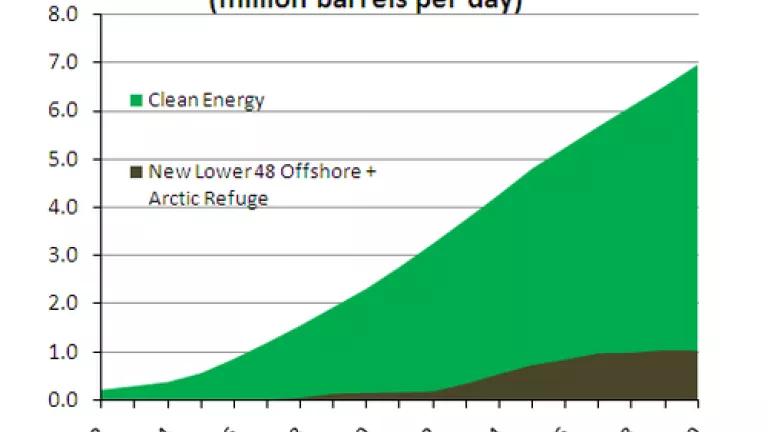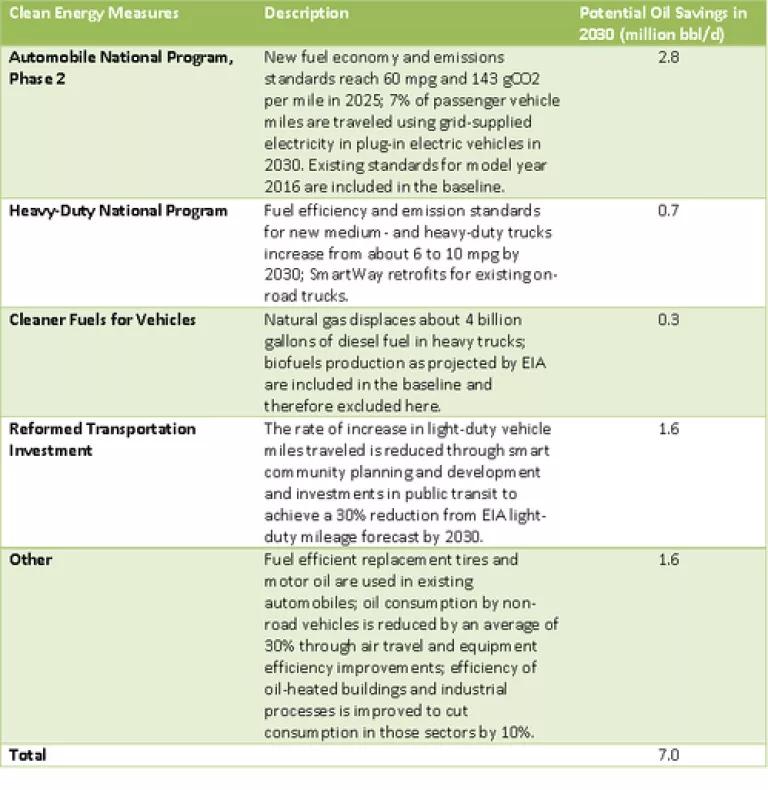
With oil prices back above $100 per barrel and gasoline prices rapidly jumping up in the last two weeks, drivers are feeling the pain at the pump and unease about the future. While some in Washington advocate drilling as the solution, there are better ways to provide stability for consumers and cut our oil dependence. By 2030, efficiency and other oil savings measures can save a total of 8 times more oil than opening new areas to drilling off America’s shores or in protected sensitive areas.
The only real solution to protect consumers from high and volatile gas prices is to reduce our oil dependency through more efficient cars and trucks, clean fuels, and transportation choices such as commuter rail. Despite this, Republicans in the U.S. House are trying to prevent the adoption of strong standards by taking away EPA’s authority to set new pollution standards for cars and trucks.
Over the next two decades, we could cut our oil dependency by one-third, or about 7 million of barrels of oil each day. Conversely, drilling for new oil offshore the lower 48 states and opening the Arctic National Wildlife Refuge are projected to produce only about 1 million barrels per day in 2030. Moreover, even if we open up more areas tomorrow to drilling, it would be another 7 to 10 years before any oil flows from these new wells. In contrast, efficiency and other oil savings measures can start producing savings immediately. Cumulatively by 2030, we could save 8 times more oil than we could produce from drilling.
See notes below for chart information.[1]
In fact, just improving our automobiles could save nearly three times the amount of oil that could be produced with new drilling. The Obama Administration is developing new standards for cars and light trucks made during model years 2017 to 2025. Standards set to reach 60 miles per gallon (mpg) in 2025 could save 2.8 million barrels per day (bbl/d) in 2030. These savings will be additional to the 1.6 million bbl/d savings in 2030 from the existing standards for 2012 to 2016.
Strong, 60-mpg standards are good for consumers and the environment. Drivers will have more choices of fuel-efficient cars and trucks, helping them to be more immune to price spikes. According to the Department of Transportation and EPA, drivers of such vehicles will save over $6,000 during the vehicle lifetime due to fewer trips to the gas pump even when accounting for the cost of more efficient technologies. The standards could also cut annual carbon pollution by over 450 million metric tons by 2030.
A comprehensive but achievable clean energy strategy can cut our oil imports by more than half by 2030. Current U.S. consumption is about 19 million bbl/d and imports are about 11.7 million bbl/d. By 2030, the Energy Information Administration (EIA) projects that demand would reach 21 million bbl/d as demand increases due to a growing population and more per-vehicle driving but the increase is mitigated by existing passenger vehicle standards that improve efficiency for model years 2012 to 2016. Imports are projected to be 11.6 million bbl/d. By saving 7 million bbl/d in 2030, we cut U.S. consumption by about one third and imports by about 60 percent.

See notes below for table source information.[2]
With the huge opportunity for oil savings, we do not need oil from sensitive habitats such as the Arctic National Wildlife Refuge. We also don’t need to pursue oil supplies derived from destructive, high carbon tar sands. We have a clean energy path to pursue.
The ‘drill, baby, drill’ mantra won’t reduce our oil dependency or provide long-term relief from volatile oil prices. The U.S. consumes nearly a quarter of the world’s oil production yet we have less than 2 percent of the world’s reserves. We can’t drill our way to cheap or stable pump prices. The solutions to the pain at the pump are policies that give consumers more choices in efficient cars and other forms of transportation because they cut oil demand. Our leaders should be focused on investing in American clean energy innovation, not sending our money overseas.
[1] New lower 48 state offshore oil volume is the production projected by the Energy Information Administration (EIA), Annual Energy Outlook 2010 that is incremental to the 2017 production level in the same forecast. Assuming that significant offshore production can start in seven years (i.e. 2018) is conservative. EIA’s 2009 analysis of offshore production, “Impact of Limitations on Access to Oil and Natural Gas Resources in the Federal Outer Continental Shelf,” indicates a 10 year timeline between lease and production. Production from the Arctic National Wildlife Refuge is that projected by EIA, “Analysis of Crude Oil Production in the Arctic National Wildlife Refuge”, May 2008 but the production start date is shifted three years later to reflect the time since the EIA assessment.
[2] Source: NRDC analysis. Savings are compared to a baseline based on EIA projections in the Annual Energy Outlook 2010, which includes vehicle efficiency standards for model years 2012 to 2016 and the Renewable Fuel Standard. Vehicle fleet oil savings from future improvements in automobile efficiency are calculated using a NRDC vehicle turnover model.

